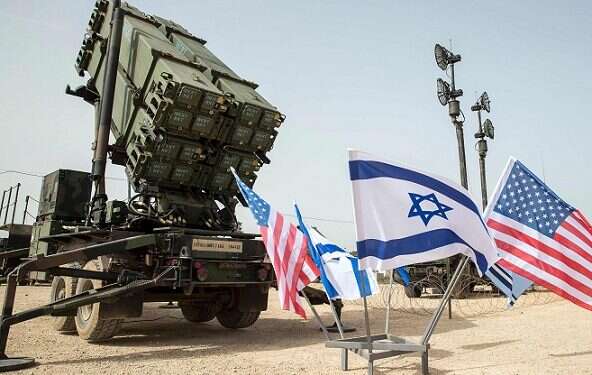U.S. and Israeli forces are preparing to fight alongside one another to defend Israel against missile attacks from across the region if war breaks out in the Middle East.
In 2001, Israel and the United States signed a deal under which U.S. air defenses will be deployed to assist Israel if the Jewish state is hit by a multipronged missile attack.
Some 2,500 Israeli soldiers and 2,000 American troops have been training together in Israel for that scenario as part of Juniper Cobra 2018, the flagship joint training exercise that has taken place every two years since 2001 and adjusts each time to cope with the shifting battlefield.
The two-week exercise began on March 4, and includes a scenario of massive missile attacks on Israel from multiple fronts, namely the Gaza Strip, Syria, Lebanon and Iran. The drill involves field training, computer simulations and live-fire of sophisticated missile defense systems such as Iron Dome, David's Sling, Arrow 2 and Arrow 3, and Patriot interceptors.
"We will practice, train shoulder to shoulder, the same as we will fight in crisis times," Brig. Gen. Zvika Haimovich, head of the Israeli military's Air Defense Command, told reporters on Thursday.
Israel has made missile defense a priority since Iraqi dictator Saddam Hussein bombarded the country with 39 Scud missiles during the 1991 Gulf War.
Today, the threat is far more formidable. The Lebanon-based Shiite terrorist group Hezbollah is believed to possess well over 100,000 rockets and missiles capable of striking virtually anywhere in Israel.
Hezbollah and Iranian forces are also active in neighboring Syria, backing President Bashar Assad. Gaza's Hamas rulers have a vast arsenal of rockets, and Iran has developed long-range missiles that can reach Israel.
Those threats are concrete. Hezbollah launched some 4,000 rockets at Israel during the 2006 Second Lebanon War, while Hamas and other terrorist groups in Gaza have fired thousands of rockets into Israel from the south.
Haimovich stressed that Juniper Cobra does not focus on any particular adversary. Instead, it is meant to simulate "very complex scenarios" that include simultaneous attacks from enemy countries and militant groups.
"We practice that because this is a real scenario," he said. He said the threats include salvos of more accurate rockets and missiles from multiple directions.
"Those are our main assumptions," he said. "It doesn't matter if it's from south, north, east, or others."
Lt. Gen. Richard Clark, commander of the U.S. troops, said American forces are ready to deploy in Israel at Jerusalem's request. Once Israel gives the green light, he said American forces could start moving from Europe within two or three days.
With literally "thousands of threats" to prepare for, Clark said the drill is an opportunity for the two allies to improve communication and coordination.
"The ballistic missile defense mission is a very difficult one, very technical one, and it requires precise integrated effort to make it work, and that's what we're developing here," he said.




